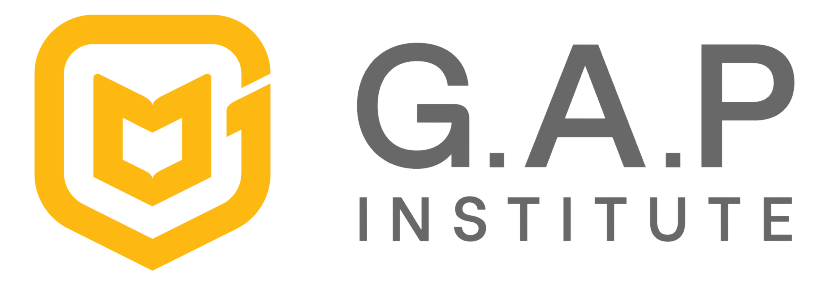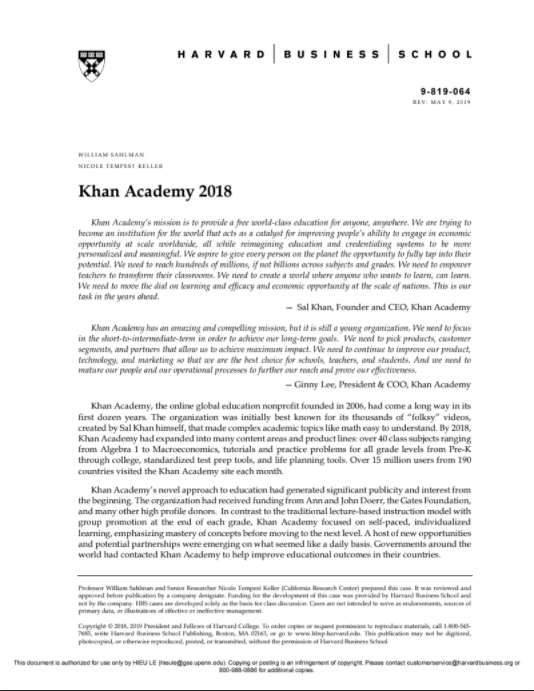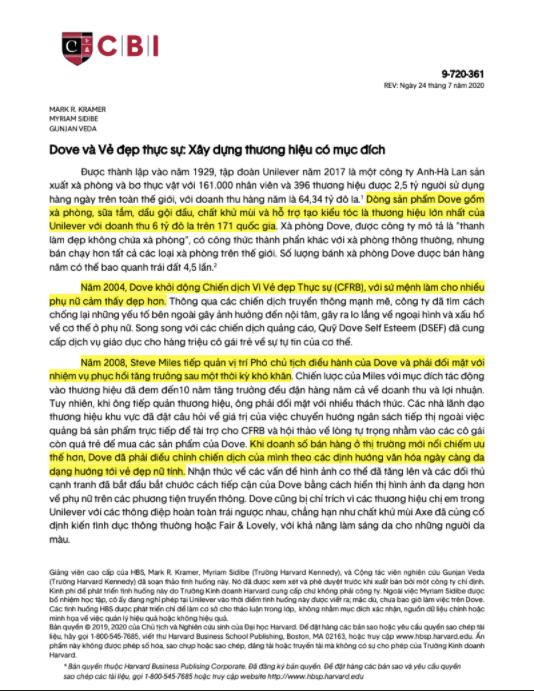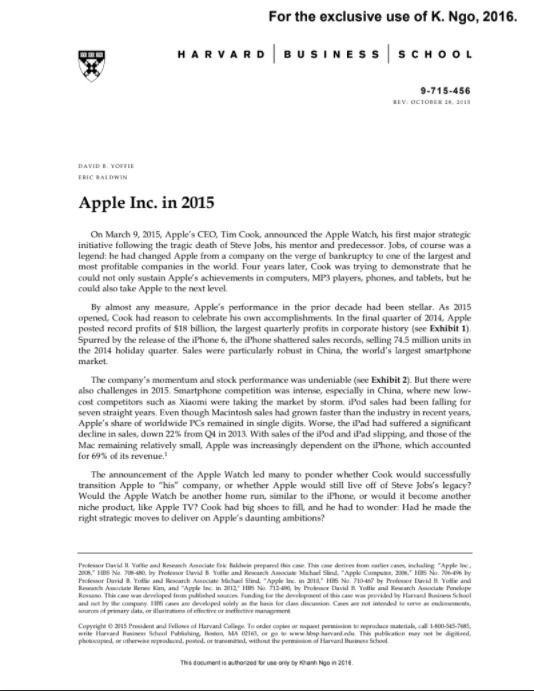Tác giả: William Sahlman, Nicole Tempest Keller
LỜI DẪN:
Đây là case study mua bản quyền từ Harvard Business Review, được Học viện G.A.P sử dụng trong chương trình Business Case dành cho sinh viên với mục tiêu ứng tuyển vào các tập đoàn đa quốc gia, các chương trình Management Trainee, và các tập đoàn tài chính, tư vấn, đầu tư. Case Study của Khan Academy được sử dụng trong chuyên đề “Product Launching Strategy”.
Summary
Khan Academy’s mission is to provide a free world-class education for anyone, anywhere. We are trying to become an institution for the world that acts as a catalyst for improving people’s ability to engage in economic opportunity at scale worldwide, all while reimagining education and credentialing systems to be more personalized and meaningful. We aspire to give every person on the planet the opportunity to fully tap into their potential. We need to reach hundreds of millions, if not billions across subjects and grades. We need to empower teachers to transform their classrooms. We need to create a world where anyone who wants to learn, can learn. We need to move the dial on learning and efficacy and economic opportunity at the scale of nations. This is our task in the years ahead.
— Sal Khan, Founder and CEO, Khan Academy
Khan Academy, the online global education nonprofit founded in 2006, had come a long way in its first dozen years. The organization was initially best known for its thousands of “folksy” videos, created by Sal Khan himself, that made complex academic topics like math easy to understand. By 2018, Khan Academy had expanded into many content areas and product lines: over 40 class subjects ranging from Algebra 1 to Macroeconomics, tutorials and practice problems for all grade levels from Pre-K through college, standardized test prep tools, and life planning tools. Over 15 million users from 190 countries visited the Khan Academy site each month.
Khan Academy’s novel approach to education had generated significant publicity and interest from the beginning. The organization had received funding from Ann and John Doerr, the Gates Foundation, and many other high profile donors. In contrast to the traditional lecture-based instruction model with group promotion at the end of each grade, Khan Academy focused on self-paced, individualized learning, emphasizing mastery of concepts before moving to the next level. A host of new opportunities and potential partnerships were emerging on what seemed like a daily basis. Governments around the world had contacted Khan Academy to help improve educational outcomes in their countries.
As Khan Academy entered its next phase of development, the organization was facing multifaceted challenges. To accomplish its goals, Khan would have to attract substantial financial resources; recruit and retain great people; uphold high standards for quality; scale its operational processes, product, and platform; and demonstrate measurable impact. It was not an unfamiliar territory for startups.
Short text:
Khan Academy – The journey to become an institution for the world that acts as a catalyst for improving people’s ability to engage in economic opportunity at scale worldwide, all while reimagining education and credentialing systems to be more personalized and meaningful.
KEY QUESTION OF THE CASE:
What should Khan Academy do to develop the brand at scale worldwide and optimize the system to become more personalized and meaningful?
GHI CHÚ
Case study này cho thể hiện cho người đọc về hành trình phát triển thương hiệu và sứ mệnh của Khan Academy. Từ đó yêu cầu người đọc đề ra chiến lược về mặt tài chính, nhân sự và quy mô hoạt động để Khan Academy có thể hoàn thành sứ mệnh và tạo cơ hội tiếp cận với giáo dục cho mọi người trên toàn thế giới.



